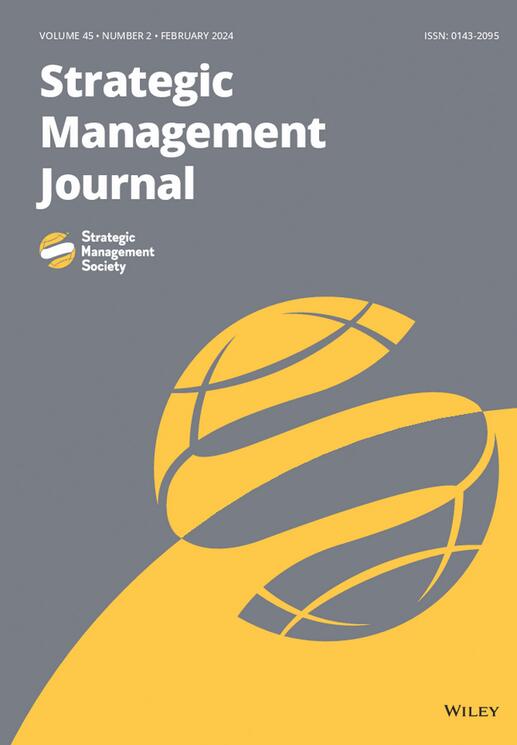当初创企业倒闭时,专利资产还有第二次生命吗?重新部署的可能性和转让方式分析
IF 7.2
1区 管理学
Q1 BUSINESS
引用次数: 0
摘要
研究摘要创业公司是专利发明的肥沃源泉。然而,人们对初创企业倒闭时专利资产的情况知之甚少:这些资产是否会通过重新部署给新的所有者而获得 "第二次生命"?基于 264 家风险投资支持的失败初创企业,我们记录了专利作为独立资产以及通过与发明人共同转移到购买机构而形成的活跃市场。然后,我们模拟并测试了二级专利市场的交易厚度以及资产价值的公司特定性和与原始风险企业的关联程度如何影响专利的重新部署可能性和转让模式。这项研究揭示了影响无形资产重新部署的条件以及初创企业在清算中保值的能力。以往的研究表明,解散的初创企业是人力资本和学习溢出效应的重要来源,而我们则首次发现了其专利资产的活跃转售市场。这项研究揭示了影响专利转让的重新部署可能性和模式的条件,无论是作为独立资产还是通过与发明人共同流动到购买机构。研究证据基于半导体、软件和医疗器械领域 264 家风险投资支持的初创企业。正式模型和实证研究结果表明,二级市场的交易条件不仅会影响失败初创企业的专利被出售的可能性,还会影响管理者留住发明人和保持与人力资本互补性的积极性。本文章由计算机程序翻译,如有差异,请以英文原文为准。
Do patent assets have a second life when startups fail? An analysis of the redeployment likelihood and mode of transfer
Research SummaryEntrepreneurial firms are fertile sources of patented inventions. Yet little is known about what happens to patent assets when startups go out of business: Do the assets have a “second life” through redeployment to new owners? Based on 264 failed VC‐backed startups, we document an active market for the patents both as standalone assets and through co‐movement with inventors to the purchasing organization. We then model and test how the redeployment likelihood and mode of transfer is shaped by trading thickness in the secondary patent market and the degree to which asset value is firm‐specific and tied to the original venture. The study sheds new light on conditions that affect the redeployment of intangible assets and the abilities of startups to preserve value in liquidation.Managerial SummaryThe process of innovation naturally gives rise to failed attempts and abandoned projects. While prior studies document that disbanded ventures are important sources of human capital and learning spillovers, we are the first to document an active resale market for their patent assets. This study shines new light on conditions that affect the redeployment likelihood and mode of patent transfer, whether as standalone assets or through co‐mobility with an inventor to the purchasing organization. The evidence is based on 264 VC‐backed startups in the semiconductor, software, and medical device sectors. The formal model and empirical findings suggest that trading conditions in the secondary market not only affect the likelihood that patents originating from failed startups will be sold but also influence managerial incentives to retain inventors and preserve complementarities with the human capital.
求助全文
通过发布文献求助,成功后即可免费获取论文全文。
去求助
来源期刊

Strategic Management Journal
Multiple-
CiteScore
13.70
自引率
8.40%
发文量
109
期刊介绍:
At the Strategic Management Journal, we are committed to publishing top-tier research that addresses key questions in the field of strategic management and captivates scholars in this area. Our publication welcomes manuscripts covering a wide range of topics, perspectives, and research methodologies. As a result, our editorial decisions truly embrace the diversity inherent in the field.
 求助内容:
求助内容: 应助结果提醒方式:
应助结果提醒方式:


